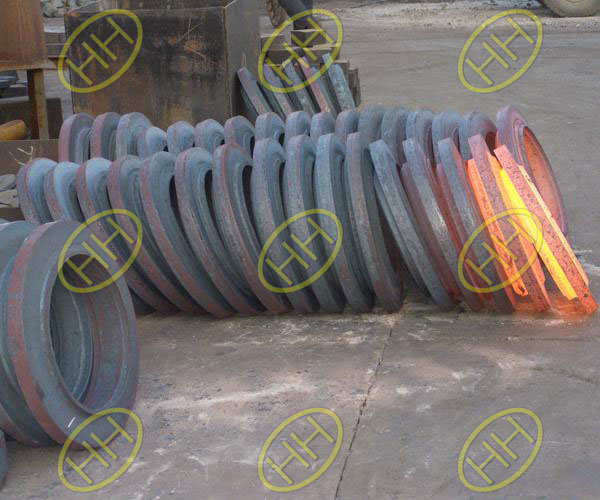What is the forging process of pipeline products?
Forging is the application of thermal and mechanical energy to steel billets or ingots to change the shape of the material when it is in a solid state.Steel forgings are usually made by a series of compression processes under extremely high pressure, with less surface porosity, finer grain structure, higher tensile strength, better fatigue life/strength, and greater ductility than any other steel processing.
What is forging process of pipeline products?
Forging can be generally divided into hot forging and cold forging. Hot forging is the forging process that the billets is pressed under hot temperature status, in other words, billet needs to be heated by medium frequency furnace before deformation.There are also different types of hot forging, including open die forging, closed die forging and roll forging.
Types of hot forging:
Open die forging
Open die forging, also known as free forging, is a hot forging method that shaping metals under the workforce of simple molds. Open die forging is specially used to produce large metal parts in simple shapes, like shafts. The tolerances of open die forging are relatively loose, and the components by open die forging are more likely to be further machined.
Closed die forging
Closed die forging, also called impression die forging, is the popular hot forging method for small components different from open die forging. This kind of forging way is usually interchangeable with investment casting method for the same metal part, but closed die forging is better for its good strength and toughness.
Roll forging
Roll forging is the forging process for round shaped parts, like rings, flanges, ect.
Cold forging:
Cold forging is another forging process that deforms the billets to required shapes directly under room temperature, this kind of forging is more suitable for small precision parts, like bolts and nut, gears, ect. Cold forging deforms metal while it is below its recrystallization point. Cold forging is generally preferred when the metal is already a soft metal, like aluminum. This process is usually less expensive than hot forging and the end product requires little, if any, finishing work. Sometimes, when aluminum is cold forged into a desired shape, it is heat treated to strengthen the piece. This is called “tempering”.
Haihao Group is one of the biggest forged pipe fittings & flanges manufacturers in China,our products are as follows:
Forged Pipe Fittings:
forging 45 degree/90 degree elbows,equal/reducer/lateral tees,cross,outlet,union,cap,coupling,plug,nipple,bushing, boss,etc.
Forged Flanges:
weld neck flange, blind flange, slip on flange, lap joint flange, threaded flange, socket weld flange, plate flange, spectacle blind flange, orifice flange, reducing flange, tube sheet, anchor flange, etc.
If you want to know more about our pipeline products,please email us: sales@haihaogroup.com

